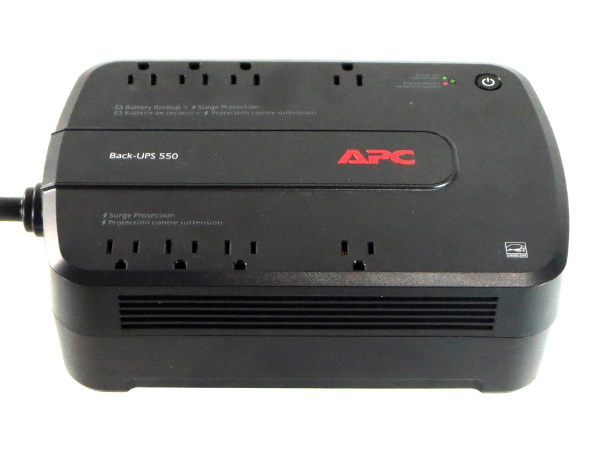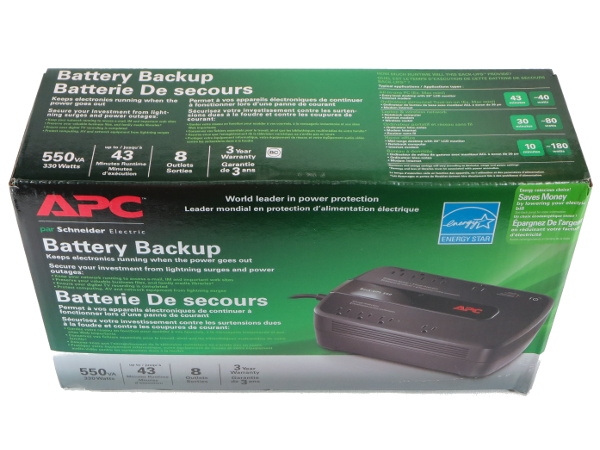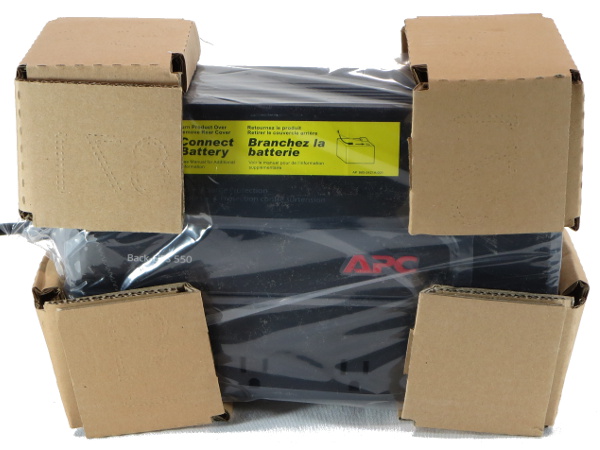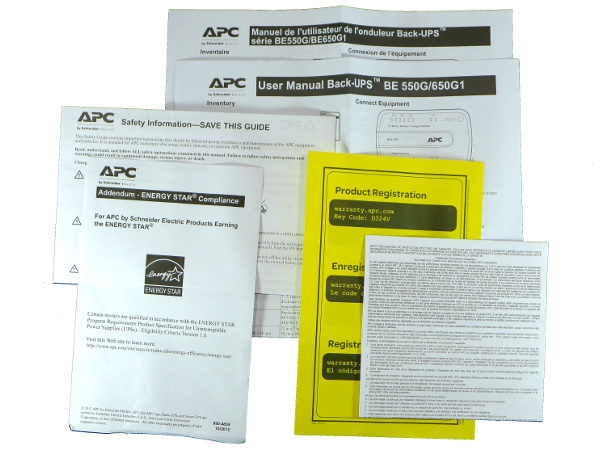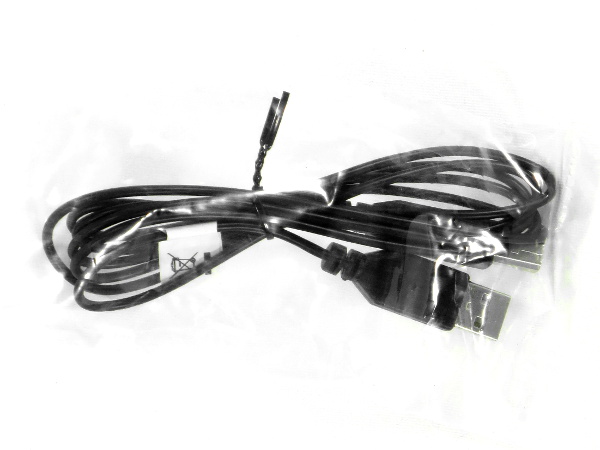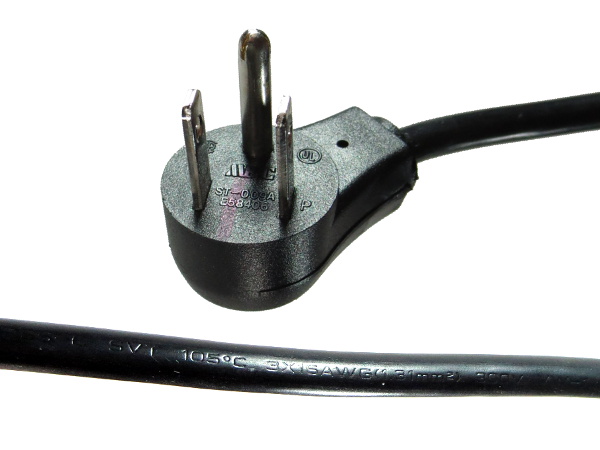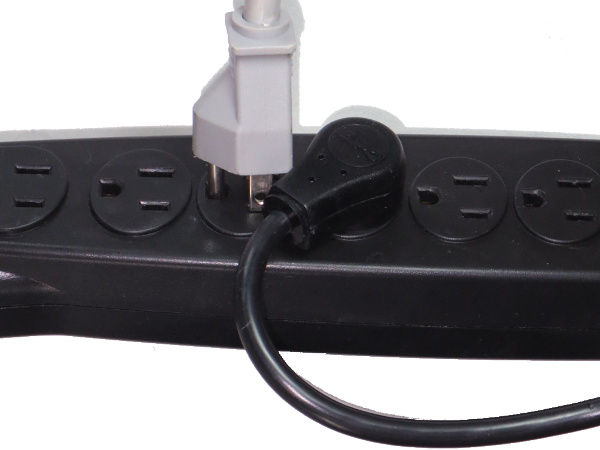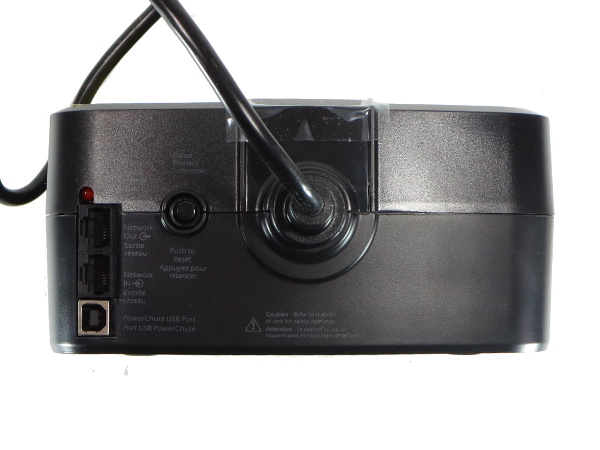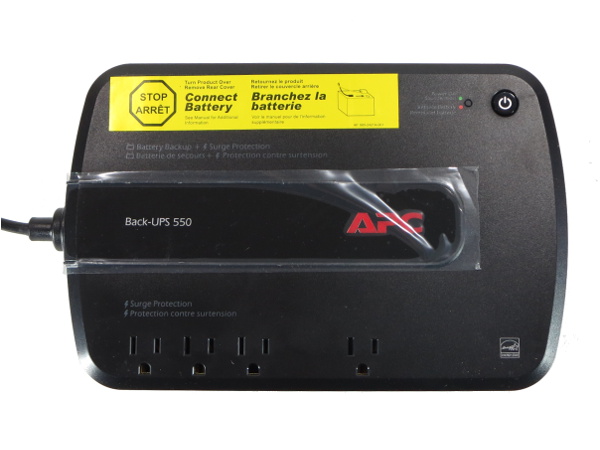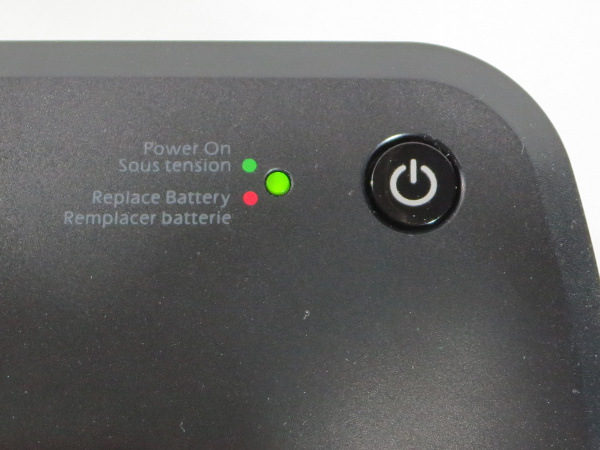APC BE550G Tear-Down
Today’s Victim: BE550
After coming away unimpressed with the SMART1000, I decided to look at what was available for half the price. The BE550G is one of those compact units you can either leave somewhere on the floor, out of sight, or mount on a wall. You get no fancy display or control interface, but who needs any of that when all you want is a few minutes of run time to power down your PC gracefully? I plan to gift this one to my mother for her VoIP setup once I am done with it; she should get about an hour of backup time to call the power company.
MORE: Tripp-Lite SMART1000LCD Tear-Down
MORE: CyberPower LX1500GU-FC UPS Tear-Down
MORE: SurgeX SA-1810 Tear-Down
The Marketing Spiel
There aren’t as many marketing claims on the packaging as I am used to seeing. Although most of the open printable space is covered with text, it simply reiterates the obvious advantages of having backup power: keeping your network, PVR or whatever else you plug into it working long enough to finish doing whatever it is you are doing. We also get an EnergyStar logo and three-year warranty.
The top side has a table stating the estimated run times for given loads:
- 43 minutes at ~40W
- 30 minutes at ~80W
- 10 minutes at ~180W
Going from 80W to 40W yields less than 50% more run time instead of the expected doubling, which hints at 20-25W of internal losses on battery.
Packaging
Energy efficiency is not the only green thing about the BE550G: instead of Styrofoam or plastic foam blocks, APC uses thick folded corrugated cardboard to protect the UPS’ corners. Aside from being more environmentally friendly, cardboard also does not fracture on impact or snap the way Styrofoam often does.
Group Shot
For a size comparison, here’s the BE550G on the left next to my BX1000 on the right. The middle unit, which is barely larger, is a little teaser for my next UPS tear-down.
Get Tom's Hardware's best news and in-depth reviews, straight to your inbox.
Paper, Lots Of.
A fair amount of dead tree is included. There's a large manual in both French and English, a safety sheet, an Energy Star compliance addendum, a warranty information sheet and a product registration reminder.
A Welcome Change
Contents runs thin in the accessories department with a single standard A-to-B USB cable, a welcome change from the proprietary USB type A to RJ45 cable many of APC's products use.
Plug And Cord
APC seems to like its compact plug, but you might not appreciate having your fingers within three millimeters of the live pin, which is located near where you would normally grab this plug. Markings embossed into the cable jacket identify it as 3x1.31mm² or AWG16, which should be perfectly fine for a 550VA UPS. Are we going to get a 12-13A breaker this time?
You may have noticed a streak of blue marker (it comes out purple-ish on black) between the pins, suggesting the cord was tested by quality control.
One Disadvantage Of Angeled Plugs
When you have a mix of straight and angled plugs, you may end up sacrificing connectivity. Here, the issue is compounded by the power bar’s outlets having a 28mm pitch instead of the standard 36mm spacing.
Tail End
The cable entry side of the unit features network surge suppression ports, the USB monitoring port, a push-to-reset-style breaker and a red wiring fault indicator. There's nothing unusual to speak of. All markings are present in both French and English, with the text below the cord directing you to the bottom of the unit for additional safety information.
Top View
The eight outlets are split between four protection-only outlets at the bottom with a single double-spaced outlet to accommodate transformer bricks and a symmetrical arrangement under the yellow label for battery-backup outlets.
There is no fancy first-time power-up routine to avoid accidental turn-on during shipping. The unit leaves the factory with its battery disconnected, and a label reminds you to plug the battery in before using the UPS. If you choose to ignore the label, plug it in and turn it on by holding the button for a second, the unit squeals angrily until you unplug it or turn it off.
Another advantage of shipping with a disconnected battery is that electronics inside the UPS don't discharge the power source while it sits in a warehouse. This is a good thing, since lead-acid batteries do not like being run completely flat.
Missed Opportunity
Since the power button is already made of mostly transparent plastic, it would have taken only a slight modification to pipe the LED’s light through the button to light it up instead of having a separate LED hole next to the switch. I think it would have looked better, too.
